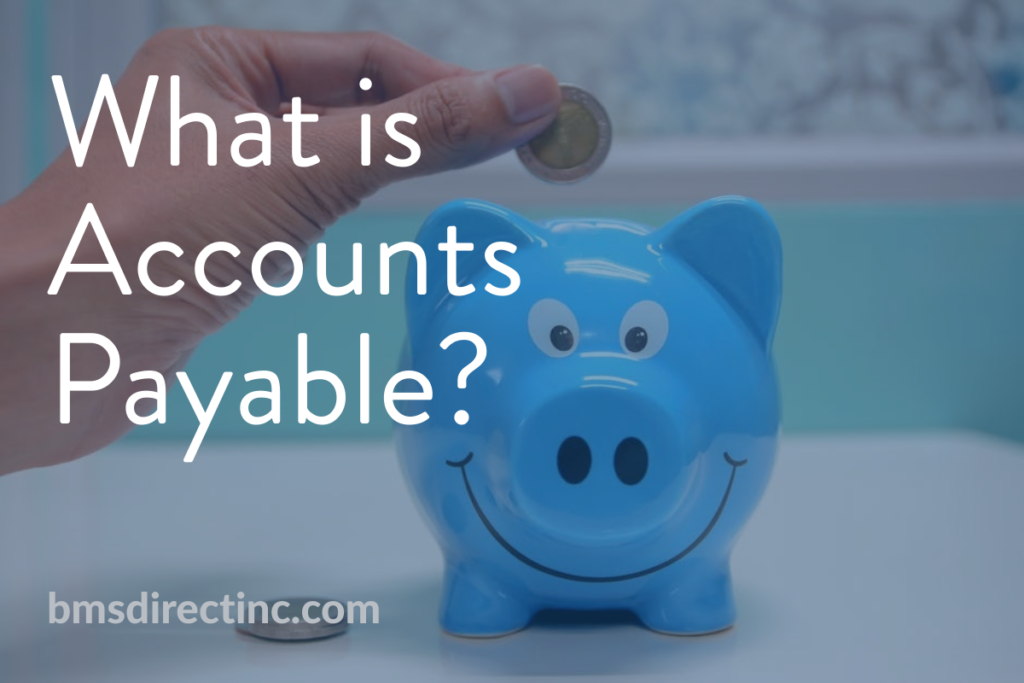To stay in business, your company must pay its bills. Failure to do so or to not do it in a timely manner will make your creditors extremely unhappy and seriously jeopardize the business relationship you have with them as well as negatively affect your company’s overall credit rating.
This is where the Accounts Payable (AP) function comes into play and why it is so important to the success of your company.
What is AP?
So exactly what is AP? A company normally doesn’t pay cash up front when ordering the goods or services it needs to operate. Thus, your company purchases something on credit and will pay for it later.
This liability incurred usually must be repaid within a relatively short time-frame to avoid defaulting on the debt. Defaulting would not be a good thing at all, of course.
One thing to keep in mind as a frame of reference is that we, as individuals, often use AP in our daily lives as well whenever we purchase something on credit and have to take the necessary step to pay off the debt in the time-frame stipulated.
Getting behind in our consumer payments or, worse, not paying at all, will do serious damage to our personal credit rating. Naturally, the same thing is true for companies and their credit standing as a business.
Role of AP and What an AP Specialist Does
In your company, you will want to utilize an AP Specialist, a type of accounting clerk, to properly carry out this extremely important function. An Accounts Payable Specialist is a crucial member of your company’s overall finance team.
He or she has is responsible for making sure your company’s bills are paid and all associated transaction activities are recorded. In doing so, the AP Specialist must keep track of all payments and expenditures.
These include things like purchase orders, invoices, statements, and payroll. To reconcile processed work, your AP Specialist must verify entries and compare system reports to balances.
In addition, to keep your company in good standing when tax time comes, the AP Specialist must produce the financial transactions, records, and bookkeeping needed by your accountants and auditors to prepare the company’s tax return.
Example of Use of AP
An example of when AP comes into play would be when a hardware store stocks its shelves with various products that it gets from a wide range of vendors/suppliers. Those items comprise the store’s overall inventory and thus are part of something called trade payables.
If this hardware store owes money to any vendors/suppliers, this situation falls into the category of short-term debts or obligations within AP and must be treated accordingly.
The End-to-End AP Cycle
The full AP Cycle consists of an end-to-end process that requires your company to match documents, approve invoices, issue checks, and record payments. This cycle involves all those steps needed to receive, process, and pay vendor/supplier invoices.
Included in the AP Cycle is the Procure to Pay (P2P) Process that is used for obtaining any raw materials your company needs for providing a service or manufacturing a product and then paying for these.
P2P involves everything from Vendor Master Maintenance via procurement and Vendor Invoice Processing, which as the name suggests, is when your company processes payments to external vendors/suppliers and conducts period closing activities.
The Payment Process
AP handles all of the processing of your company’s invoice and non-payroll payments These fall into 5 different categories:
• Vendor Invoices (e.g. for equipment, supplies, service agreements, and other purchases made to vendors paid against a Purchase Order)
• AP Payment Request Form (e.g. payments made to non-trade vendors or for those situations in which there isn’t a standard ‘invoice’ such as refunds, utilities, conference registrations, and training stipends)
• AP Recurring Payment Request Form (e.g. for 3 or more payments made on a recurring basis such as fellowships, rents, or training stipends)
• AP Honoraria Request Form (e.g. for those situations in which it’s customary to make an honorarium payment such as for a mentor, advisory board member or guest speaker)
• Wire Transfer/Foreign Currency Check Request (e.g for international payments that have to be sent via foreign currency or wire transfer)
Debit or Credit or Both?
It’s all about balancing things out. When your company pays one of its suppliers/vendors, the amount involved is included in AP. So in order to ensure that the credit balance is decreased, you will need to debit AP.
This is necessary because AP is a liability account, which means it must have a credit balance.
Any time your company purchases additional services or goods on credit, instead of paying with cash, AP must be credited so that credit balance increases in turn.
So, to make your company’s balance sheet come out correctly, AP must include both debit and credit entries.
Purchase Order Invoice
In most cases, your company will use a document called a Purchase Order (PO) created by you, the buyer, to authorize a purchase transaction. The PO has a unique PO Number that your company defines, which is usually a number that matches the one used on the invoice provided to you by the vendor/supplier.
To enable your company to properly balance its books, you will use a process called 2 Way Matching. The way this works is that whenever you get an invoice from a vendor/supplier for payment of services or goods that were ordered via a PO, AP creates an invoice that matches the PO.
Non-Purchase Order Invoice
Whenever a PO is not required, such as when an invoice falls under the Direct Buy Limit, your company will use a Non-Purchase Order (Non-PO) to make a payment to a supplier/vendor.
This payment method is beneficial in terms of allowing faster payments and better transparency of the invoice payment process.
Recording Expenses Using Journal Entries
Whenever your company incurs expenses from the purchase of goods or services and receives a bill or invoice from a vendor/supplier, you must record those expenses in AP (or Trade Payables).
This is journal entries that properly debit the asset or expense account to which a purchase relates and in turn credit the AP account. Simply put, when you pay a bill, be sure to debit AP and credit cash.
A word of caution is in order. Since on the balance sheet AP is considered to be a current liability, not an asset, you should keep individual transactions in the subsidiary ledger of AP.
This is important because you don’t want to under-represent your company’s total liabilities, which would result in you overstating your net income in financial statements. Accuracy in financial statements is paramount, of course.
Summary
Accounts Payable is the primary department in your company that processes invoices, also known as P2P as part of the overall, end-to-end AP cycle. AP takes care of the processing of all incoming invoices from the time they arrive until the time they are posted and thus makes sure your company pays its bills in a timely manner.
The bottom line is that AP, as carried out by your AP Specialist, is a vital component of your company’s overall financial team and helps ensure the success of your business.

